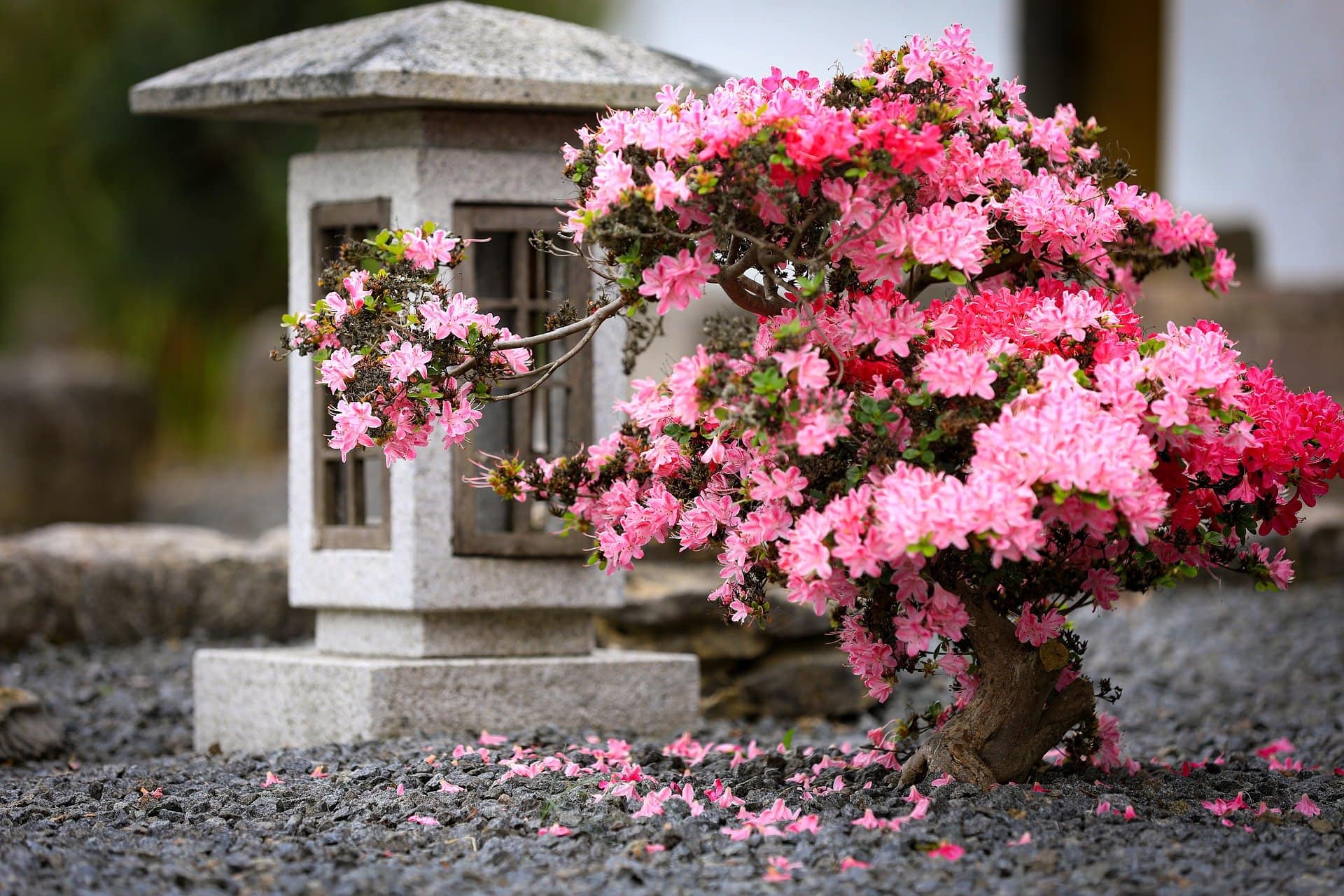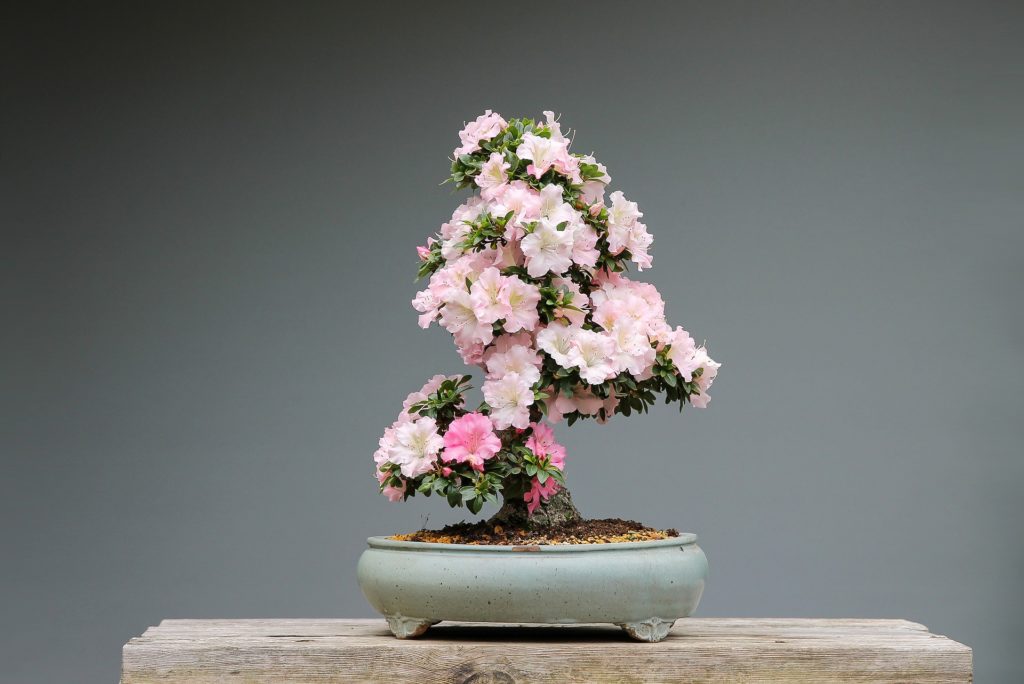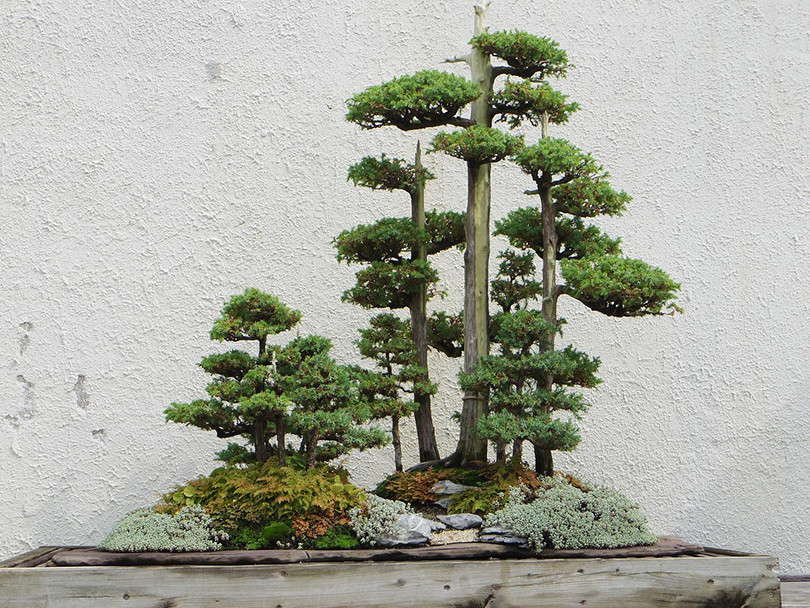Can Bonsai Trees Grow Indoors? Tips, Tricks, & How-To Guide
-
Pete Ortiz
- Last updated:

Bonsai trees are quite attractive, thus easily lovable. It’s easy to be swept away by the awe-inspiring appearance of the tree that originates from Japan. But can they grow indoors?
It’s possible to have thriving bonsai trees indoors given the right conditions, such as high light intensity and humidity. Other care measures include watering, fertilizing, pruning, and repotting.
In this article, you can master great tips and tricks on how to grow bonsai trees indoors.
Which Bonsai Trees Do Well Indoors?
As already mentioned, you can grow bonsai trees indoors and showcase them to friends and family. These miniature trees are attractive and an amazing boost to indoor décor. However, you need the right conditions to keep the tree alive and growing as intended.
First, find the type that suits such an environment. For instance, a Ficus is among the best bonsai species you can grow indoors successfully. Since most indoor environments have low humidity, Ficus are tolerant and will keep growing.
Also, consider bonsai trees like Jade, Hawaiian Umbrella, Fukien Tea, and Sweet Plum. These are tropical bonsai that don’t have a dormant stage and will keep growing in winter.
For those with a dormant stage, it’s better to have them outside where the environment is right. During that period, they get less light intensity and lower temperatures until spring.

Taking Care of a Bonsai Tree Indoors
Unlike other house plants, bonsai trees will require a bit more fussing and observation. If you notice any slight change, you must act fast. Below are specific requirements to keep it thriving.
The 6 Steps of Taking Care of a Bonsai Tree Indoors
1. Proper Light

Outside, bonsai trees get all the light they need in the right intensity. However, that changes when you bring the plant indoors. The plant needs high intensity bright light to thrive. Therefore, it’s prudent to have proper lighting in the house.
An indoor bonsai tree can do well on a south-facing window where it gets direct sunlight for most of the day. But, if that’s not an option, you have to get some artificial lights to boost the intensity. In such instances, you can use LED, HID, or fluorescent lights.
Fluorescent lights are crucial when you need new foliage on your trees. In addition, these help seedlings to germinate and grow.
On the other hand, HID lights are similar to direct sunlight that bonsai trees love. But it’s important to monitor the intensity to avoid burning their leaves. Also, some artificial lights can limit flowering, so find a spot where you can get direct sunlight. That way, you only use artificial lights to substitute when necessary.
2. Humidity
Bonsai trees need lots of humidity to grow and even flower. All this is at risk when you bring the plant indoors where there’s little humidity mostly attributed to the AC and heating systems; most homes tend to have lower humidity and lots of dry air.
Thus, you must find a way to boost humidity conditions inside for bonsai trees. It’s quite simple to do so by adding a water tray in the room with the trees. In addition, you can get a misting bottle and spray the tree now and then to boost humidity.
Also, you can purchase a humidifier to make work easier when you have several bonsai trees. The humidifier keeps the humidity levels in check and adds more when necessary. This is an excellent option, especially when you don’t spend all day at home.
Species like Ficus bonsai tend to tolerate low humidity thanks to their waxy leaves. But this isn’t the case for numerous other species. It’s better to keep humidity levels high in your home even with tolerant bonsai trees.
3. Watering

Another crucial consideration to keep in mind is watering the trees. All plant species need water to grow, and bonsai are no exception. But unlike other tolerant house plants, you need to water bonsai often.
A good bonsai tree is best grown in a small pot despite the size of the plant. For this reason, frequent watering is the only way to quench the tree. However, this differs depending on the temperature in your home.
During the hot season, bonsai trees need frequent watering. But when it’s cold, you have to be careful not to overwater the trees. Always touch the topsoil to gauge if it’s dry enough to water or not. Also, you can lift the bonsai tree, and if it feels heavy, it probably has enough water.
You can immerse the tree or water it from above. For immersion, fill a wider pot with water and immerse the bonsai trees one at a time. This is a good method for a tree that’s been in the pot for some time since you won’t lose soil.
However, for a recently repotted bonsai tree, it’s better to water from above. Use a watering can to pour water on the soil gently until the tree has had enough.
In both instances, always take care not to overwater and leave them waterlogged. Such cases lead to issues like root rot and overall damage to the trees. Still, you have to ensure not to underwater since this can kill the trees.
4. Fertilizing
Bonsai trees growing indoors need feeding to keep growing and blooming. This feeding keeps your trees healthy. When it’s time to feed the trees, you have the option between granular and liquid fertilizers.
While granular is good for bonsai, it’s much easier to wash away as you water the trees. In that case, work with the liquid fertilizer.
Bonsai trees are small and won’t need too much fertilizer. Keep in mind the instructions from the manufacturer when it’s time to feed the bonsai trees. Always check the instructions for dilution and usage.
5. Pruning

Pruning is a crucial tip for growing bonsai trees indoors. Not only does this help you keep the right shape, but it helps your trees remain healthy. Since the bonsai trees are small, growing long shoots can lead to weak branches.
When you notice new growth, fetch some bonsai pruning scissors or similar tools and start trimming the leaves. The rule is to keep one or two sets of leaves. Anything more than that can interfere with the shape of the tree. Always check for new growth that breaks the outline of the shape and snip it away. Also, keep empty spaces between the branches free of leaves or shoots.
6. Repotting
Like any other house plant, there’ll come a time when you need to repot bonsai trees. Repotting is important for the health and well-being of bonsai trees. So, aim to do it after a couple of years. When it’s time to repot, wiggle the plant out of the old pot, lift it up and examine the roots.
The best sign that it’s time to repot is when you have many roots and little soil. Use a hook to tease the long roots loose and trim them. After that, add a bonsai mix in the new pot and repot the tree. Ensure there are no spaces left around the tree before watering.
What Issues Do Bonsai Trees Face Indoors?

Even with proper indoor conditions, bonsai trees can have a hard time growing indoors. Unlike other house plants, these ones will require your attention and prowess to survive. Some issues you might face with indoor bonsai trees include:
Temperature Balance
Outside, bonsai trees can adapt to different temperature conditions. This is why they grow in spring to fall and then go dormant when the temperatures drop. However, indoors is a whole other ball game.
It’s hard, especially as a beginner to strike the perfect balance when it comes to temperature. At times, your home can have varying temperatures. One room is hot while the rest are cool, or the air is too humid or vice versa.
It’s why you have to take some time to pick out the right locations in the house to place bonsai trees. It might take some trial and error, but you’ll soon figure it out.
Forced Growth
If you notice a bonsai tree growing well for a little while then stopping suddenly, this is most likely a case of forced growth. Bonsai trees require light intensity to grow. However, the same happens when the temperature in your home is high.
Fast growth as a result of high temperature makes the bonsai grow at a high speed. This isn’t the best because it ends up exhausting the tree, resulting in lengthy weak growth. The trick is having high light intensity and moderate temperatures.
White Mold
Bonsai soil is a good medium for white mold to grow. The soil is nutrient-rich and compacted in order to hold the water your trees will need for some time. While that is a good thing, it also makes the bonsai soil have poor drainage.
If you notice white mold on your bonsai, it’s a sign that the tree has too much water. While it’s better to leave house plants to dry out, the same isn’t applicable for bonsai trees. The best you can do is hold back watering for a day or two to correct the issue. Also, keep it in an area with better air flow.
Infestations
Keeping bonsai trees indoors does wonders for your aesthetics and general mood. But you must watch out for infestations. Bonsai trees are prone to aphids and spider mites. Since the tree is small, the infestation can do a lot of damage.
This is another reason to be watchful of bonsai trees. If you notice any signs of an infestation, bathe the tree with soapy water. A mild soap dish will kill the infestation and not harm the leaves, branches, and stem.

Swollen Bark
Pruning is essential for the growth and well-being of bonsai trees. However, each cut needs time to heal. If you notice the tree has a swollen bark, it’s a sign that healing isn’t taking place. The best solution for a swollen bark is to cut away the infected area. After that, apply a tree cut paste to encourage healing.
How Long Do Bonsai Trees Live Indoors?
Unlike those outside, bonsai trees growing indoors tend to have a longer life span. This is especially true when you get each of the care steps correct. Inside, the bonsai trees are protected from the harsh elements that might limit their growth.
Therefore, it’s not shocking that a bonsai tree can grow to be a century old. It’s even possible to pass it on from one generation to the next provided proper care and management continues. Some bonsai species that can have a long lifespan include:
There is no guarantee that the bonsai trees you bring home will outlive you, but proper care means you can enjoy it longer. Start by working out the temperature and light balance in your home. With time, you gain more skills and see your bonsai trees thrive.
 Conclusion
Conclusion
Bonsai trees thrive outside, but it’s still possible to keep them inside the house. These lovely miniature trees are excellent for boosting your indoor aesthetics. However, you need to take proper care of each bonsai.
These trees need proper lighting, humidity, watering, and feeding. On top of that, you must know when to prune and repot. It’s also crucial to know some issues that face bonsai trees indoors and tricks to fix them.
Featured Image Credit: scartmyart, Pixabay
Contents


